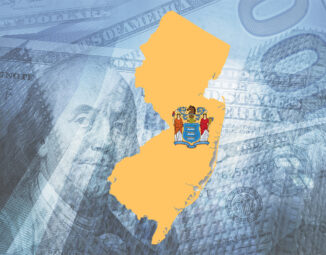PART I: QUALIFIED OPPORTUNITY FUND TAX BENEFITS – NOT JUST FOR REAL ESTATE INVESTORS
The Treasury Department has issued two sets of proposed regulations concerning the tax benefits available to taxpayers who invest in Qualified Opportunity Funds (QOFs). The first set of proposed regulations (published in October 2018) clarified many points that are important for QOFs which own real estate located in Qualified Opportunity Zones (QOZs). However, taxpayers hoping to invest in QOFs which conduct other types of business in QOZs were left scratching their heads on several crucial questions. Fortunately, the second set of proposed regulations (published on April 2019) answered many of these questions. Although some grey areas remain, it is likely that many QOFs will now feel sufficiently confident to invest in non-real-estate QOZ businesses.
The April 2019 proposed regulations addressed several issues of particular importance to these non-real-estate businesses. This Part I is the first of a series of posts discussing these non-real-estate-businesses related issues. This Part I focuses on the 50% Gross Income Requirement for QOFs.
50% Gross Income Requirement.
A trade or business cannot qualify as a QOZ Business unless at least 50% of its total gross income is derived from the active conduct of a trade or business “in the QOZ.” According to the April 2019 proposed regulations, this “in the QOZ” requirement may be satisfied for a year by meeting any of the following 4 safe-harbor tests:
- Services Performed Based on Hours. At least 50% of the services performed for the trade or business are performed in the QOZ, based on the total number of hours performed by the company’s workers in a QOZ during the year, over the total number of hours performed by the company’s workers anywhere during that same year.
For purposes of these safe harbors, company workers include not only the company’s employees, but also the company’s independent contractors and their employees.
Example 1. A startup company which develops software applications for global sale has a campus in a QOZ. Because this company’s global consumers buy these applications through internet download, the company’s workers spend the majority of their working hours developing these software applications at the company’s QOZ campus. This company satisfies the first safe harbor, even though the vast majority of its sales are made to consumers located outside of the QOZ.
- Services Performed Based on Amounts Paid for Services. At least 50% of the services performed for the trade or business are performed in the QOZ, based on the total amount paid by the company for services performed by the company’s workers in a QOZ during the year, over the total amount paid by the company for services performed by the company’s workers anywhere during that same year.
Example 2. The startup company in Example 1 also has a service center located outside of the QOZ. More working hours of the company’s workers are performed at that service center than at the company’s QOZ soft-development campus. However, the company pays 50% or more of its total compensation to the workers working at the company’s QOZ campus. This company satisfies the second safe harbor.
- Necessary Tangible Property and Business Functions. The tangible property of the trade or business is located in a QOZ and the management or operational functions performed in the QOZ are each necessary to generate at least 50% of the gross income of the trade or business.
Example 3. A landscaping company has its headquarters in a QOZ where the company officers and employees manage the company’s daily operations (occurring within and outside the QOZ). All of the company’s equipment and supplies are stored within the headquarters facilities or elsewhere in the QOZ. This company satisfies the third safe harbor.
On the other hand, if a company only has a post-office box or other delivery address located in the QOZ, the presence of that delivery address is not a factor necessary to generate gross income for the company.
- Facts and circumstances. Based on all the facts and circumstances, at least 50% of the gross income of the business is derived from the active conduct of a trade or business in the QOZ. This safe harbor provides room for creative thinking by companies and their advisors.
Even though the IRS has already provided these 4 safe harbors, additional guidance on the “in the QOZ” issue is expected. Practitioners have been asked to comment on these 4 safe harbors, and to provide suggestions for additional safe harbors (e.g., based on headcount of certain types of service providers).
These new rules are welcome news for QOFs looking to diversify their investments beyond just real estate holdings. So stay tuned as the IRS works through the comments and suggestions, and hopefully issues more useful guidance on this issue.
For more information or assistance in forming and structuring Qualified Opportunity Funds, please contact Warren W. Ayres at warren.ayres@obermayer.com or Pauline W. Markey at pauline.markey@obermayer.com.




